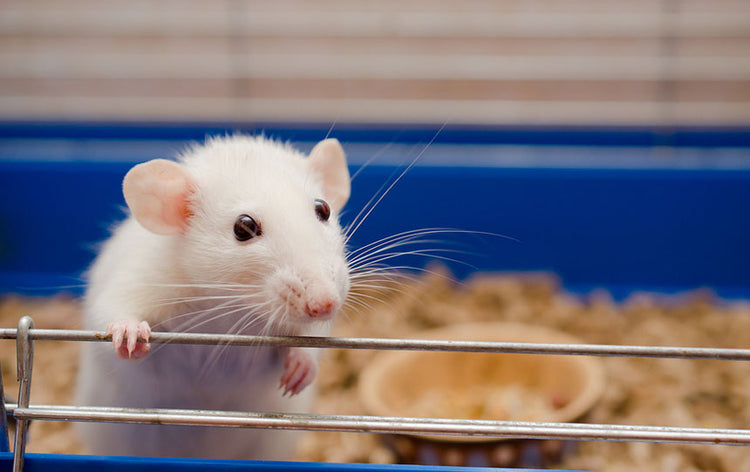Introduction: The Rat Life Cycle
Before we answer the question of how long does a rat live, it is first necessary to make clear that not all rats are the same. There are distinct subspecies amongst the rat species, with each one having a different average life expectancy. Moreover, it is important to distinguish between domesticated pet rats and the rats that are living wild and free as not only do these two categories differ in lifestyle and living conditions but they are usually of a different subspecies. In any case, rats have relatively short lifetimes compared to other common domesticated animals such as cats or dogs, with the oldest recorded rat living roughly seven years and four months, in Japan. It was a domesticated Norway rat named
Rodney, and he passed away on May 25, 1990.
Rat Age translated to Human Age
A very interesting book called “Rats” by
Debbi Ducommun, lists a rough estimate on how the rat lifetime translates to human age. Keep in mind that rats mature extremely quickly, particularly on their first weeks after birth, so in many cases weeks could mean years.
Rat Age – Human Age
- Five Weeks – Ten years
- Six Months – Sixteen years
- Nine Months – Twenty five years
- One year – Thirty five years
- One year and a half – Fifty years
- Two years – Sixty five years
- Three years – Eighty five years
- Four years – One hundred years
- Five years – One hundred ten years
- Six years – One hundred twenty years
- Seven years – One hundred thirty years
As you can already tell, the case of Rodney was pretty impressive. If he were a human he would have managed to live for one hundred thirty years. Even reaching four years should be considered pretty impressive for rat standards.
The Different Rat Species
Like it was previously stated, rat species differ in their life expectancies. And there is a difference between wild rats encountered in the wild than those typically sold in your local pet store. Wild rats are usually of the two following species: The Norway Rat (Rattus Norvegicus) and the Roof Rat (Rattus Rattus). Pet store sold rats are called “laboratory rats” or, alternatively, Fancy Rats. They are usually domesticated Norway Rats.
Fancy Rats were first bred since the 18th century and have evolved to be very different in disposition, temperament and even coloration than ordinary wild rats. For example, while a wild rat may be either black or brown a fancy rat can sport a
multitude of colors, such as white, cinnamon or even having a blue hue.
Differences in lifespan
Due to their
vast differences in both the physical and the environmental level, wild rats and pet rats end up having a different average lifespan.
On the one hand, wild rats tend to live for a very short period of time, between one and two years – or even less, should misfortune happen. It is necessary to understand that a wild rat’s life is substantially more difficult than a pet rat’s. They have to contend a lot of natural predators hunting for them, such as the owl, the hawk, the fox and the cat to name a few. They also have to deal with the ever present problem of having to find adequate sources of food, water and shelter. As a result of their roaming lifestyle, they are also coming in contact with and are susceptible to a great number of diseases.
On the other hand, a fancy rat having a longer lifespan often lives up to four years. They have no natural predators to escape from, they have easy, constant access to food and water, a nice, safe, warm and cozy shelter and in some cases of extreme rat lovers, even access to professional medical care. All these factors play a very important role in the increase of their average lifespan. Usually, when they reach the age of four, they start developing joint problems, or other important medical issues that contribute to their early death.
Keeping a Rat as a Pet
While you may very well be interested in taking up a fancy rat as a pet in your homestead it is very important to keep note that compared to other animals they live relatively short lives. We would love to have rats live up to twenty years, but it just is not going to happen as they have not been designed this way by their nature. They have a
very high metabolism and their bodies cannot survive that long. If you already have a rat pet and you would like to extend its lifespan to its maximum as you would hate to lose him early, there has been some research on how to do that: Keep in mind that the research is still ongoing and thus might not prove to be completely effective.
In short, the method goes as follows: You should heavily restrict a rat’s diet, practically causing it to fast for long periods of time and maintain itself just above the point of starvation. You should also take note, that even though
caloric restriction might be a way to increase a rat’s life they are extremely likely to go pretty miserable on such a regime.
Conclusion
At this point you should well be aware how long you should expect a rat to live. There are substantial differences between the different rat species, as well as differences between wild, free rats and rats born and raised as domesticated pets. This is due to differences both physical and environmental. In any case, rats live relatively short lives compared to other domestic animals and you should not expect them to live much longer than three to four years if they have good genetics and adequate living conditions. There has been some research on how to further prolong their lives via a regime of caloric restriction, but even though this practice could let your rat live longer it would probably make him a bit miserable.





